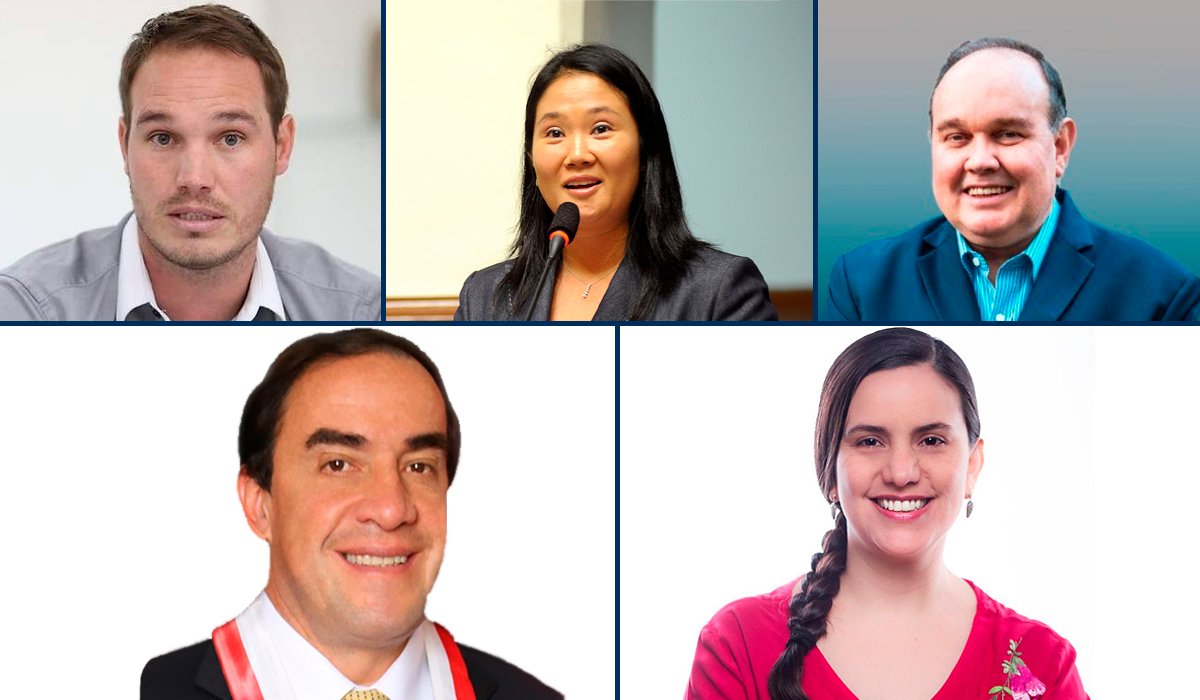RIO DE JANEIRO, BRAZIL – One week before Peru’s general elections, there is maximum uncertainty, with a technical tie between five presidential candidates, of which only two will go to the second round, according to two polls published this Sunday, April 4.
These polls, the last ones that can be published by law in Peru before the vote, coincide in reflecting a very even scenario. However, they differ in the positions of the main candidates to become the new president.

The intention to vote is very fragmented and divided, as the best-positioned candidates hardly manage to exceed 10% of the votes.
In the context of a so far relentless second wave of the pandemic, the Peruvian electorate’s disinterest and indecision also remains very high, as approximately 30 % intend to vote blank or void or have not yet decided what to do with their vote.
LESCANO CONTINUES TO LEAD, ACCORDING TO IPSOS
The first poll, a mock ballot with a ballot paper and box conducted by the pollster Ipsos for’ El Comercio’ newspaper, shows in first place the center-left candidate Yonhy Lescano, of the Acción Popular party, with 14.7 % of the valid votes.
He is followed by economist Hernando De Soto, of the neoliberal right-wing Avanza País party, with 13.9 %; and the candidate of the leftist block Juntos por el Perú (JP), Verónika Mendoza, with 12.4 %.
In fourth place with 11.9 % is former soccer goalkeeper George Forsyth, center-right candidate for the National Victory party; and in fifth place with 11.2 % is Keiko Fujimori, the daughter of former president Alberto Fujimori (1990-2000) and leader of the right-wing populist Fuerza Popular (Popular Force).
Further behind in sixth place is Rafael López Aliaga, of the ultra-conservative Renovación Popular party, with 8.2 %; and in seventh place is the trade unionist teacher Pedro Castillo, of the extreme left-wing Perú Libre party, with 7.9 %.
The Ipsos survey was carried out on March 31 to 1,526 people from all country regions in person and had a margin of error of 2.5 % plus or minus.
FUJIMORI ON TOP, ACCORDING TO IEP
The second poll, a telephone survey carried out by the Institute of Peruvian Studies (IEP) for the newspaper ‘La República’, shows Keiko Fujimori and Hernando De Soto tied in the first two places, both with 9.8 %.
In third place is López Aliaga with 8.4 %, followed in fourth place by Lescano with 8.2 % and in fifth place by Mendoza with 7.3 %, while Castillo is sixth with 6.6 % and Forsyth seventh with 5.7 %.
This survey was elaborated between April 1 and 2 with 1,215 telephone interviews with people of legal age in all Peru regions, and its margin of error is 2.8 % plus or minus.
As it was carried out by telephone and did not compute valid votes, it underestimates the party brand’s vote. It punishes the candidates with the “softest” vote, according to political scientist María Alejandra Campos.
However, the IEP poll supposedly includes the effect that the three days of debate that took place between Monday and Wednesday with the eighteen presidential candidates may have had on the population. In comparison, the Ipsos poll does not consider the last of these three days, where Lescano and López Aliaga intervened.
DE SOTO ON THE RISE
However, both polls coincide in pointing out a slight decrease in the voting intention of Lescano, who had always been at the top of the polls in the last months, and a rise of De Soto.
A difference to take into account is that, while Ipsos shows a drop in López Aliaga’s preferences, in IEP this effect occurs in Forsyth, who, until the beginning of the year, was leading the polls.
In an eventual second round, Ipsos points out that Lescano would win against all his rivals. In contrast, Forsyth would win against Mendoza and López Aliaga, and Mendoza would defeat López Aliaga.
As of this Monday, the publication of new polls is forbidden by law, so any variations in these candidates’ voting intentions will not be known until the final scrutiny of the polls.
Next April 11, more than 25 million Peruvians are summoned to the polls to elect a new president and his two vice presidents for the 2021-2026 period and renew the 130 representatives of the Congress, the five representatives of the Andean Parliament.
Source: efe

